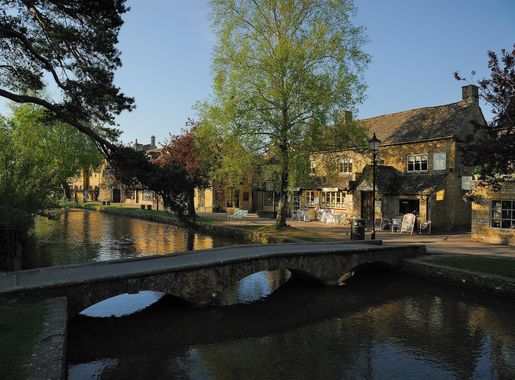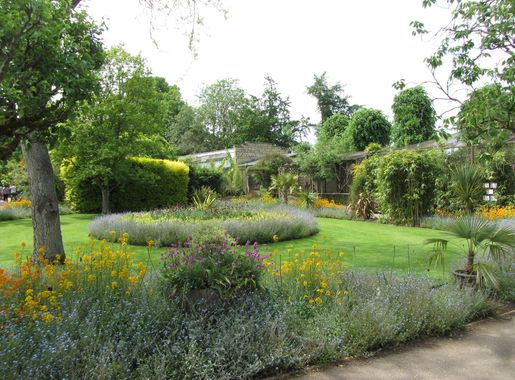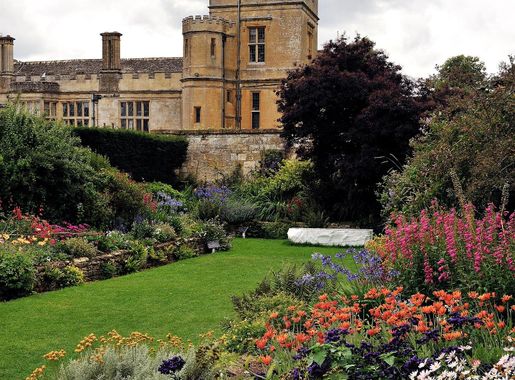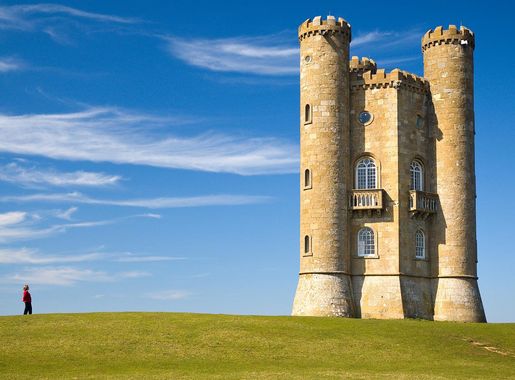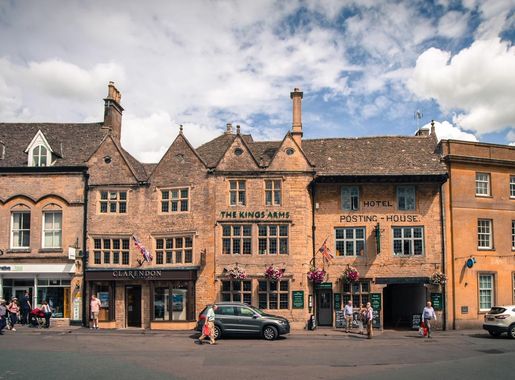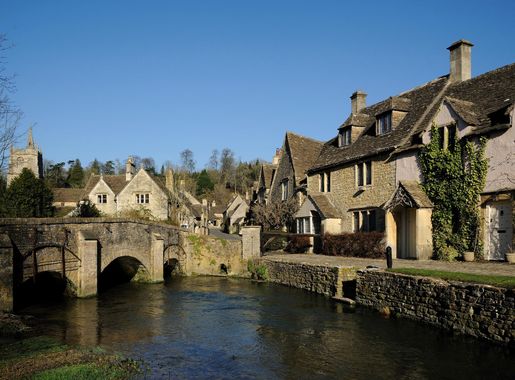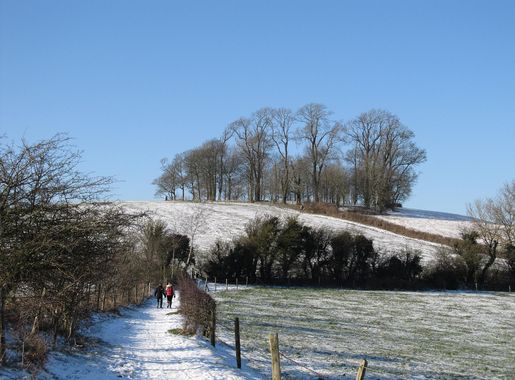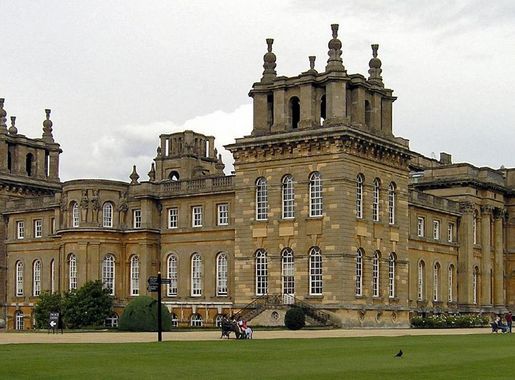
The Charming Cotswolds: England's Pastoral Paradise
Discover the timeless beauty of the Cotswolds, where rolling hills, historic villages, and grand estates create a perfect English countryside retreat.
The Cotswolds, nestled in the heart of England, is a quintessential countryside destination renowned for its rolling hills, meandering rivers, and honey-colored stone villages. This Area of Outstanding Natural Beauty spans six counties, each offering unique landscapes and historical treasures. Visitors are greeted by scenic walks through lush meadows, enchanting woodlands, and picturesque market towns that seem frozen in time. Strolling through the charming villages of Bibury, Bourton-on-the-Water, and Chipping Campden, tourists can admire traditional thatched-roof cottages, ancient churches, and timeless architecture. The Cotswolds is also home to grand estates and gardens, such as Blenheim Palace and Hidcote Manor Garden, which provide a glimpse into England's rich history and horticultural heritage. Outdoor enthusiasts will find numerous trails and paths perfect for hiking and cycling, while food lovers can indulge in local delicacies at cozy pubs and tearooms. Whether you're exploring historical sites, savoring local cuisine, or simply soaking in the serene landscape, the Cotswolds offers an idyllic escape from the hustle and bustle of modern life.
Local tips in The Cotswolds
- Visit during spring or autumn for the best weather and fewer crowds.
- Wear comfortable walking shoes as many attractions are best explored on foot.
- Try local specialties like Cotswold cheese and traditional afternoon tea.
- Consider renting a car to easily explore the spread-out villages and countryside.
- Don't miss the weekly farmers' markets for fresh produce and handmade crafts.
The Charming Cotswolds: England's Pastoral Paradise
The Cotswolds, nestled in the heart of England, is a quintessential countryside destination renowned for its rolling hills, meandering rivers, and honey-colored stone villages. This Area of Outstanding Natural Beauty spans six counties, each offering unique landscapes and historical treasures. Visitors are greeted by scenic walks through lush meadows, enchanting woodlands, and picturesque market towns that seem frozen in time. Strolling through the charming villages of Bibury, Bourton-on-the-Water, and Chipping Campden, tourists can admire traditional thatched-roof cottages, ancient churches, and timeless architecture. The Cotswolds is also home to grand estates and gardens, such as Blenheim Palace and Hidcote Manor Garden, which provide a glimpse into England's rich history and horticultural heritage. Outdoor enthusiasts will find numerous trails and paths perfect for hiking and cycling, while food lovers can indulge in local delicacies at cozy pubs and tearooms. Whether you're exploring historical sites, savoring local cuisine, or simply soaking in the serene landscape, the Cotswolds offers an idyllic escape from the hustle and bustle of modern life.
When is the best time to go to The Cotswolds?
Iconic landmarks you can’t miss
Cotswolds AONB
Explore the Cotswolds AONB, a stunning nature reserve in the UK, renowned for its rolling hills, historic villages, and vibrant wildlife.
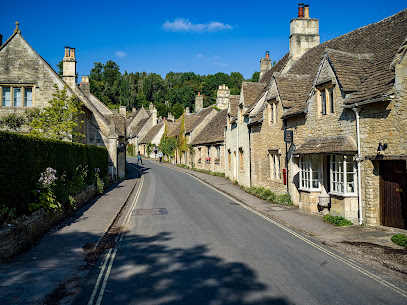
Blenheim Palace
Explore Blenheim Palace, a UNESCO World Heritage Site, where history, stunning architecture, and breathtaking gardens await every visitor.
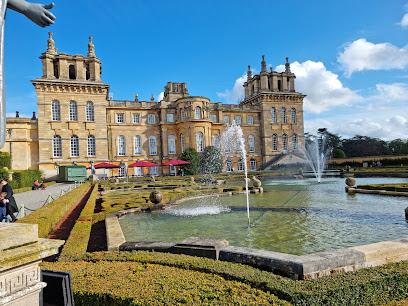
Cotswold Wildlife Park & Gardens
Discover the enchanting world of wildlife and beautiful gardens at Cotswold Wildlife Park & Gardens, a must-visit destination in the Cotswolds.

Broadway Tower
Explore the historical charm and breathtaking views of Broadway Tower, a must-visit landmark in the scenic Cotswolds.
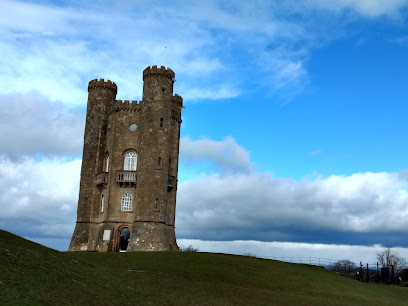
National Trust - Hidcote
Explore Hidcote, a breathtaking Arts and Crafts garden in the Cotswolds, where history and nature intertwine in perfect harmony.
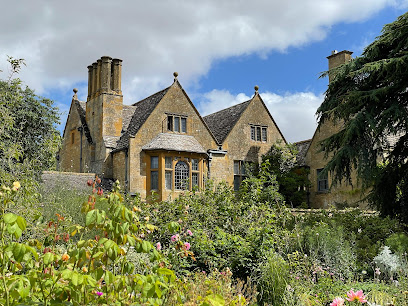
The Model Village
Discover the charm of The Model Village in Bourton-on-the-Water, where intricate miniatures and beautiful gardens create a captivating experience for all ages.
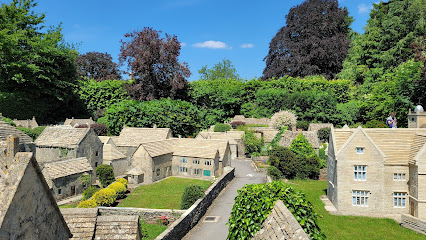
Sudeley Castle
Explore the enchanting Sudeley Castle, a historical landmark in the Cotswolds with beautiful gardens and rich heritage.

Cotswold Farm Park
Discover the joys of rural life at Cotswold Farm Park, where families connect with nature and adorable farm animals in a stunning Cotswold setting.
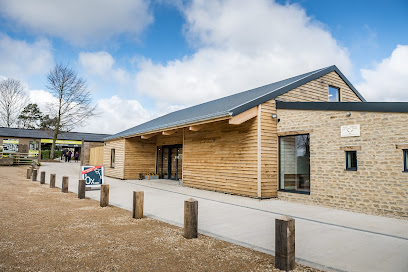
National Trust - Snowshill Manor and Garden
Explore the historic charm and stunning gardens of Snowshill Manor, a National Trust property nestled in the heart of the Cotswolds.
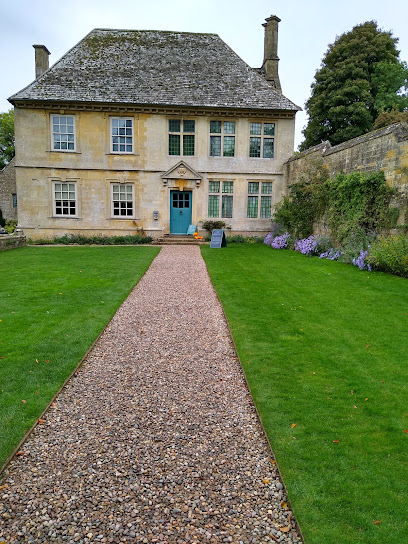
National Trust - Chedworth Roman Villa
Explore Chedworth Roman Villa, a stunning archaeological site in the Cotswolds, showcasing ancient Roman architecture and captivating mosaics.
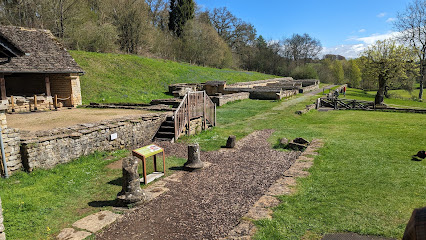
The Rollright Stones
Discover the ancient mysteries of the Rollright Stones, a historical landmark nestled in the stunning Cotswolds, where history and nature intertwine.
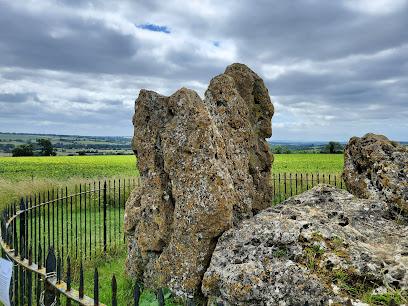
National Trust - Bibury
Experience the timeless beauty of Bibury, a charming Cotswold village filled with picturesque stone cottages and serene landscapes perfect for relaxation.
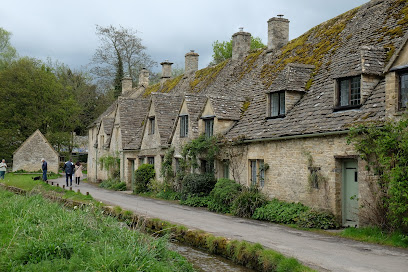
National Trust - Chastleton House
Discover the timeless beauty of Chastleton House, a Jacobean gem nestled in the Cotswolds, offering rich history and stunning gardens.
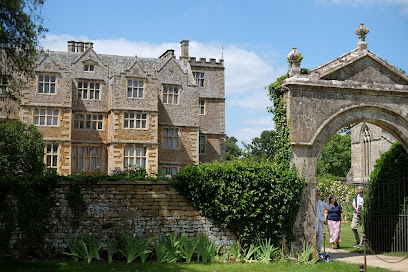
Arlington Row
Discover the enchanting Arlington Row, a heritage gem in Bibury, showcasing quintessential Cotswold architecture and breathtaking countryside scenery.

Abbey Grounds Park
Experience the natural beauty and historical charm of Abbey Grounds Park in Cirencester, a serene escape for all visitors.
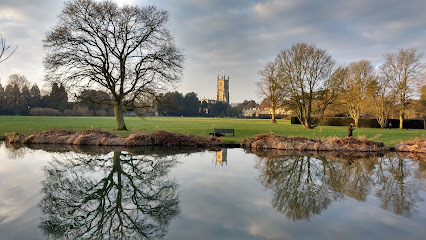
Unmissable attractions to see
National Trust - Hidcote
Discover the enchanting Hidcote Gardens, a National Trust treasure filled with vibrant flora, historical charm, and serene garden rooms in the Cotswolds.
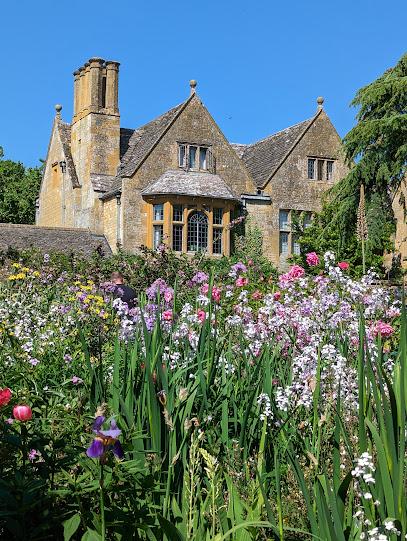
National Trust - Hidcote
Discover the breathtaking Hidcote Gardens, a National Trust treasure filled with stunning landscapes, historical charm, and vibrant flora in the heart of the Cotswolds.

Birdland Park & Gardens
Explore Birdland Park & Gardens, a delightful haven for bird lovers and families in the heart of Bourton-on-the-Water, where wildlife conservation meets natural beauty.
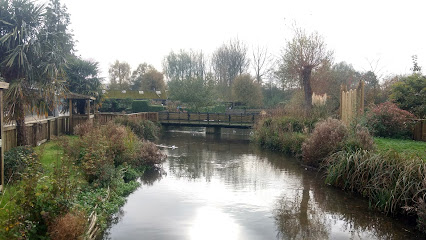
Crocodiles of the World
Explore the fascinating world of crocodiles and reptiles at Crocodiles of the World, a unique wildlife sanctuary in Carterton dedicated to conservation and education.
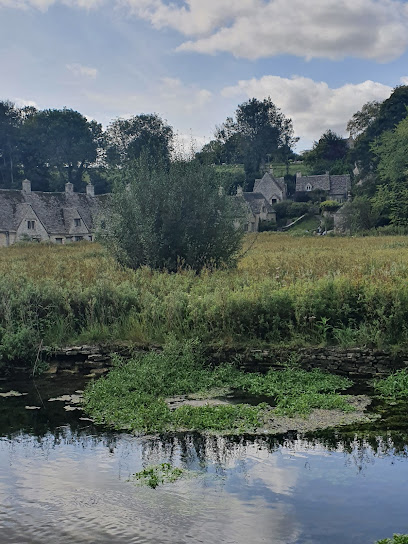
Sudeley Castle
Explore Sudeley Castle: a historical landmark in the Cotswolds, offering captivating architecture, lush gardens, and rich royal heritage.
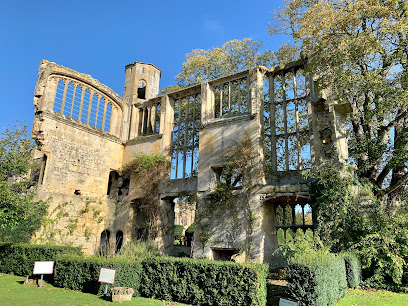
Cotswold Farm Park
Discover the joy of rural life at Cotswold Farm Park – a family-friendly haven filled with farm animals, outdoor activities, and delicious local cuisine.
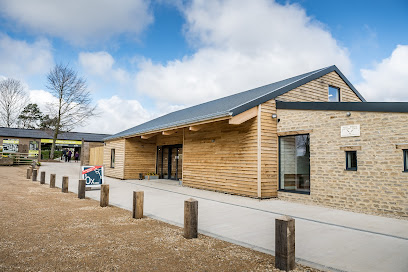
Tewkesbury Abbey
Explore the architectural grandeur and rich history of Tewkesbury Abbey, a must-visit destination for travelers in the heart of England.
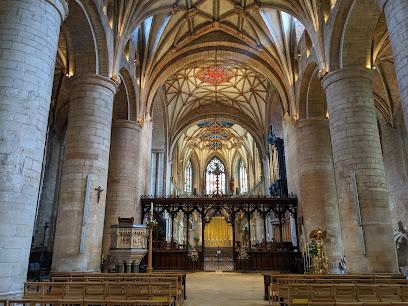
National Trust - Chedworth Roman Villa
Explore the rich history and stunning beauty of Chedworth Roman Villa, a remarkable site in the heart of the Cotswolds.

Painswick Rococo Garden
Explore the breathtaking beauty and historical charm of Painswick Rococo Garden in the heart of the Cotswolds, a perfect escape for nature lovers.

Gloucestershire Warwickshire Steam Railway
Explore the scenic Cotswolds aboard the Gloucestershire Warwickshire Steam Railway, a delightful heritage experience for all ages.
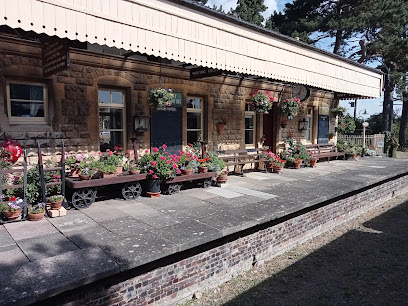
Cotswold Falconry Centre
Explore the breathtaking world of birds of prey at the Cotswold Falconry Centre in the heart of the Cotswolds, perfect for bird lovers and families alike.
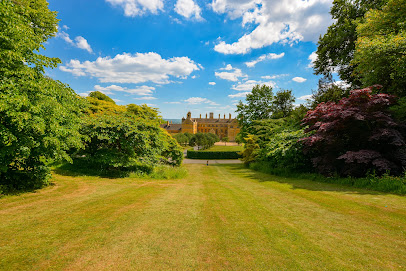
Corinium Museum
Discover the ancient world at the Corinium Museum in Cirencester, where Roman history and local heritage come alive through remarkable artifacts and engaging exhibits.
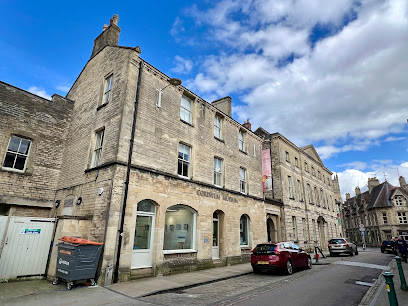
Crickley Hill Country Park
Discover the natural beauty and panoramic views of Crickley Hill Country Park, a must-visit tourist attraction in Gloucestershire.
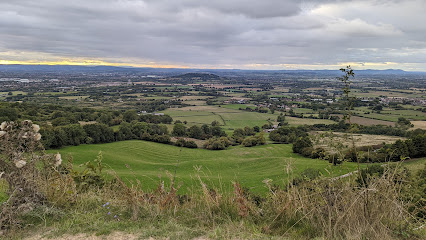
St Edward's Church
Discover the architectural beauty and historical significance of St Edward's Church in Stow-on-the-Wold, a hidden gem in the Cotswolds.
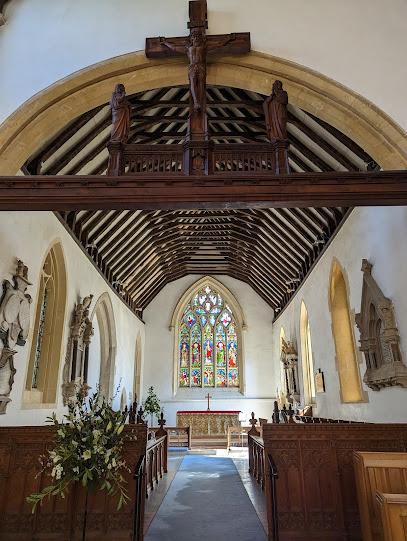
Tudor World
Discover the captivating world of Tudor England at Tudor World, an immersive museum experience in Stratford-upon-Avon.
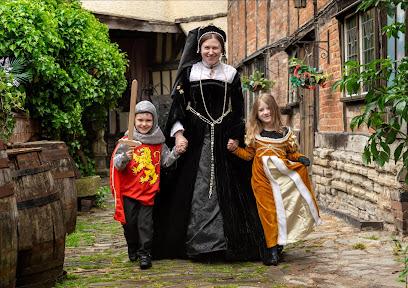
Essential places to dine
The Porch House
Experience traditional British cuisine at The Porch House, where history meets hospitality in the heart of Stow-on-the-Wold.
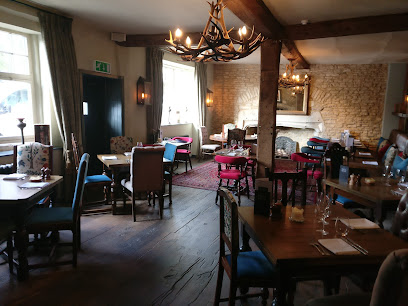
The Catherine Wheel
Discover delightful cuisine and warm hospitality at The Catherine Wheel in Bibury—where tradition meets comfort amidst stunning Cotswold scenery.
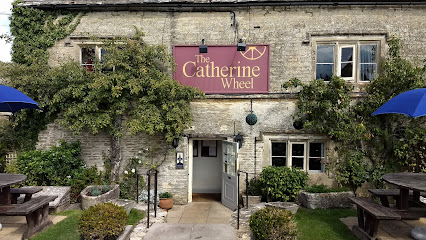
The Frogmill
Experience the charm of The Frogmill - a quintessential British restaurant and pub nestled in Shipton Oliffe near Cheltenham.

The Potting Shed Pub
Discover the charm of The Potting Shed Pub in Crudwell – where hearty meals meet exceptional drinks in a cozy atmosphere.
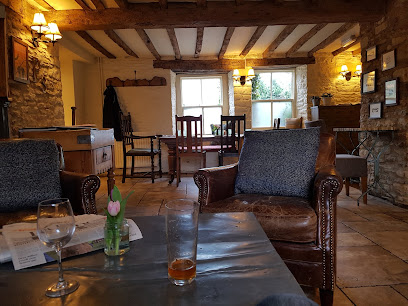
The Rose Tree Restaurant
Experience authentic English cuisine at The Rose Tree Restaurant in Bourton-on-the-Water – where local flavors meet scenic riverside views.
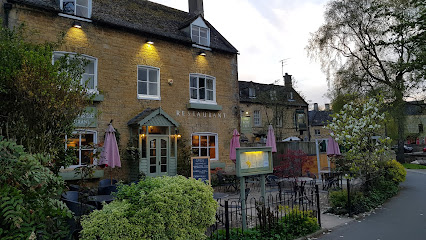
The Wild Rabbit
Discover the charm of The Wild Rabbit in Kingham—where fine dining meets rustic elegance in the heart of the Cotswolds.
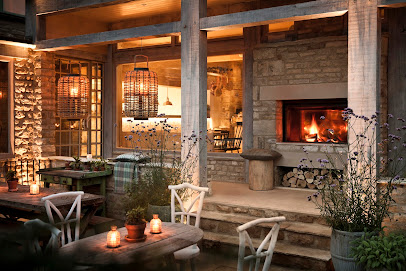
The Chequers, Cotswolds
Discover culinary excellence at The Chequers gastropub in Churchill, Cotswolds - where seasonal flavors meet warm hospitality.

The Kingham Plough
Discover authentic British cuisine at The Kingham Plough in scenic Kingham—where local flavors meet warm hospitality.

The Bell at Sapperton
Experience authentic English dining at The Bell at Sapperton, where traditional flavors meet contemporary style amidst stunning Cotswold scenery.

The Old Boathouse
Experience exquisite British and European cuisine at The Old Boathouse with stunning lake views in South Cerney.
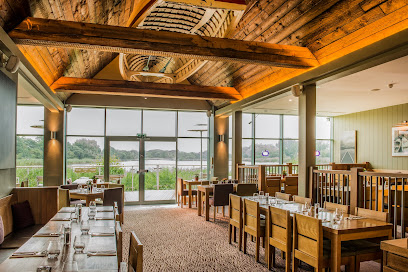
The Croft Restaurant
Experience authentic English cuisine at The Croft Restaurant in beautiful Bourton-on-the-Water - where local ingredients meet culinary excellence.
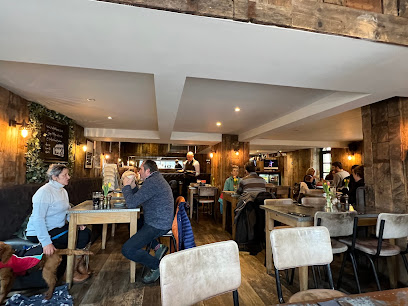
The Old Butchers
Experience exquisite English cuisine at The Old Butchers in Stow-on-the-Wold - where tradition meets modern culinary artistry.
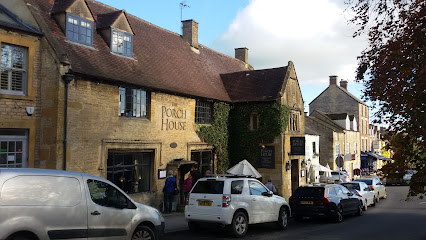
MBB BRASSERIE
Experience modern British cuisine at MBB Brasserie in Cirencester—your go-to spot for delightful breakfasts, brunches, and lunches.
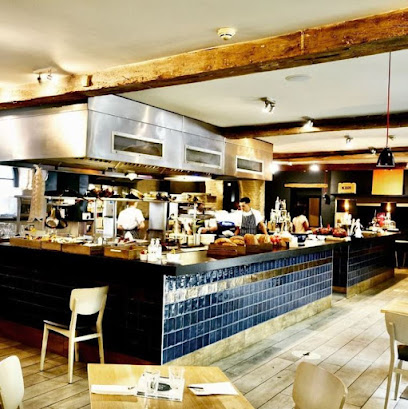
Petit Coco Bistro
Discover authentic French cuisine at Petit Coco Bistro in Cheltenham – where every meal is a culinary journey through France.
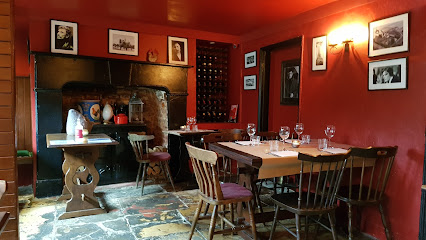
Purslane Restaurant
Experience culinary artistry at Purslane Restaurant in Cheltenham - where modern British cuisine meets exquisite seafood delights.

Markets, malls and hidden boutiques
The Cotswold Company (Flagship Store)
Discover unique home furniture and decor that embodies the rustic charm of the Cotswolds at The Cotswold Company's flagship store in Stow-on-the-Wold.
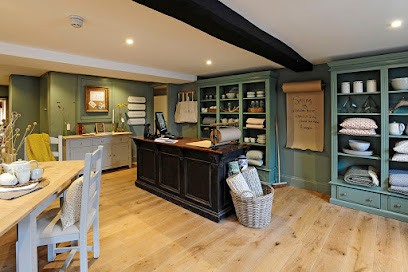
Cotswold Grey
Explore Cotswold Grey, the ultimate destination for rustic and contemporary home decor in Moreton-in-Marsh, showcasing exquisite furniture and lighting options.
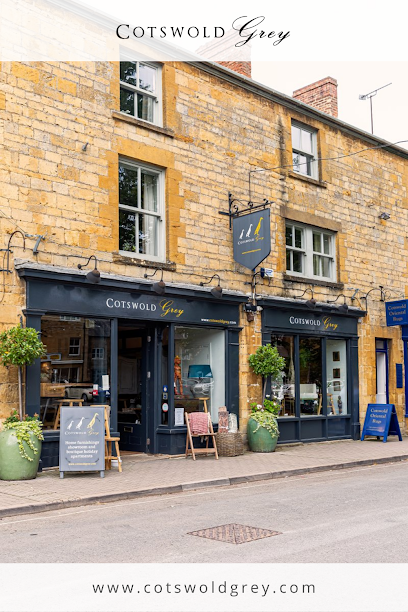
Highgrove Shop - Tetbury
Explore Highgrove Shop in Tetbury for unique gifts inspired by the stunning gardens and local artisans of the Cotswolds.

Cotswold Trading - Broadway
Explore Cotswold Trading in Broadway for unique homewares, gifts, and cards that embody the charm and beauty of the Cotswolds.
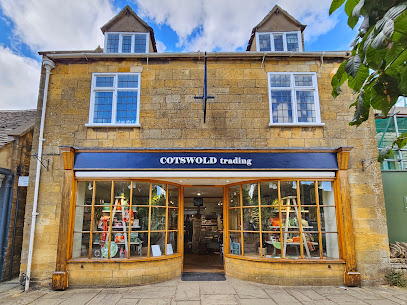
Cotswolds Distillery Shop
Discover the Cotswolds Distillery Shop: A treasure trove of artisanal spirits and unique gifts in the heart of Broadway.
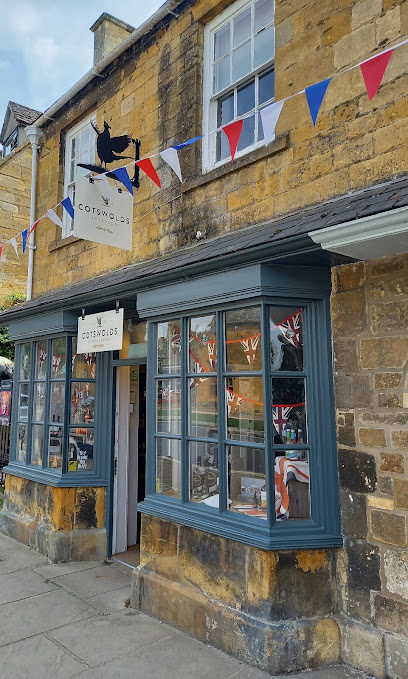
Cotswold Antiques & Tea Room
Discover unique antiques and enjoy delightful teas in the heart of Bourton-on-the-Water at Cotswold Antiques & Tea Room.

The Cotswold Shop
Discover unique pottery, delightful confectionery, and charming gifts at The Cotswold Shop in Bourton-on-the-Water, a must-visit for every traveler.

Cotswold China & Cookware
Explore the exquisite collection of chinaware and cookware in the picturesque Bourton-on-the-Water, a true gem of the Cotswolds.

The Cotswold Stores
Explore the Cotswolds with a stop at The Cotswold Stores, your perfect source for local treats and essentials in Northleach.
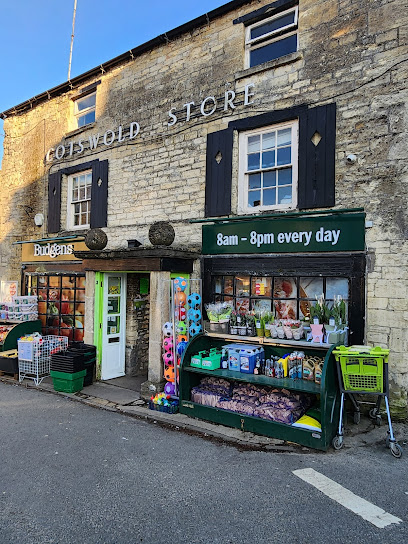
Cotswold Hipster
Explore Cotswold Hipster for unique, handcrafted bags that embody the spirit of the Cotswolds, perfect for stylish souvenirs and gifts.
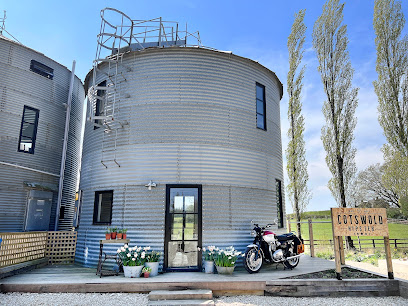
Betty & Violet
Discover unique antiques and vintage treasures at Betty & Violet, a charming shop in Broadway, perfect for collectors and casual visitors alike.
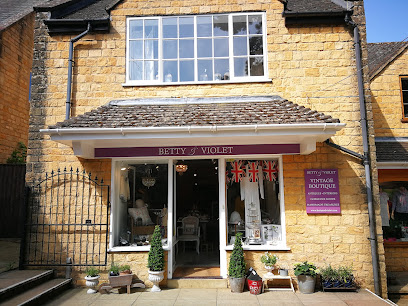
Whatever The Weather
Explore a unique gift shop in Broadway, offering a delightful selection of local crafts and memorable souvenirs from the heart of the Cotswolds.
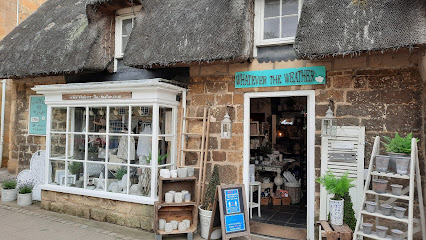
The Cotswold Snug
Explore The Cotswold Snug: A charming gift shop in Moreton-in-Marsh offering unique, handcrafted treasures and local artisan goods.
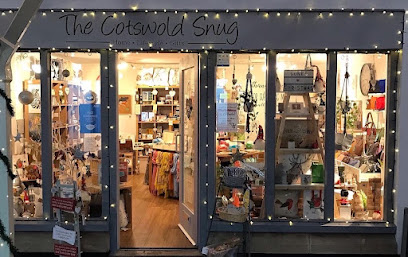
Great British Boutique
Explore the Great British Boutique in Cheltenham for unique gifts, local crafts, and a taste of the region's artistic spirit.
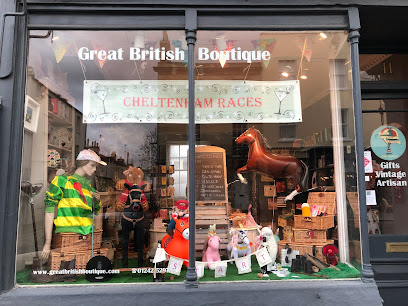
The Attic
Discover unique designer clothing at The Attic in Chipping Campden, where fashion meets the enchanting charm of the Cotswolds.
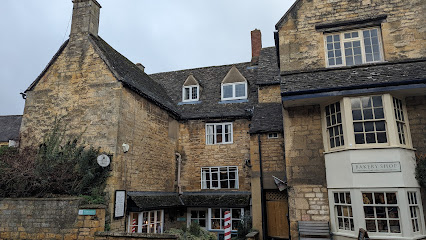
Essential bars & hidden hideouts
The Porch House
Discover the charm of The Porch House, a historic pub in Stow-on-the-Wold, offering authentic British cuisine, cozy accommodations, and a warm atmosphere.
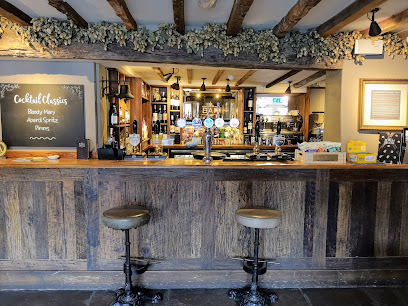
Copa of Cheltenham
Discover the vibrant Copa of Cheltenham, a delightful pub and restaurant offering local cuisine and a lively atmosphere for every visitor.
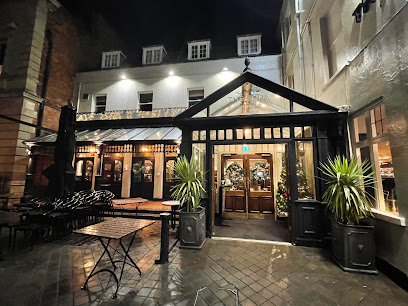
Sheep on Sheep Street
Experience the charm of Sheep on Sheep Street, a quintessential British pub offering delicious cuisine, craft beers, and a warm atmosphere in the heart of Stow-on-the-Wold.
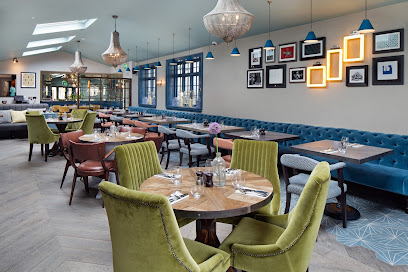
The Frogmill
Experience the charm of The Frogmill, a quintessential British pub in the heart of the Cotswolds, offering delicious food, local beers, and a cozy atmosphere.
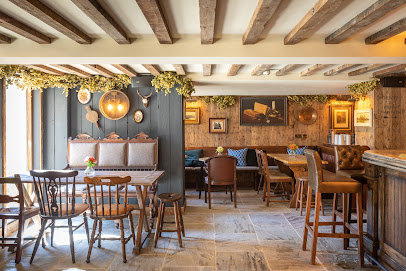
The Green Dragon Inn Pub & Shop
Discover the rustic charm of The Green Dragon Inn, where traditional hospitality meets local flavors in the heart of the Cotswolds.
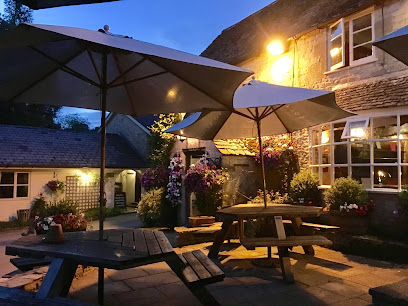
The Potting Shed Pub
Experience the best of British gastropub culture at The Potting Shed Pub in Crudwell, where fresh ingredients meet a cozy atmosphere.
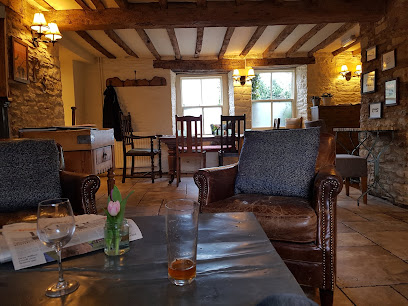
The Wild Rabbit
Experience the charm of The Wild Rabbit in Kingham, where rustic elegance meets fine dining in the heart of the Cotswolds.
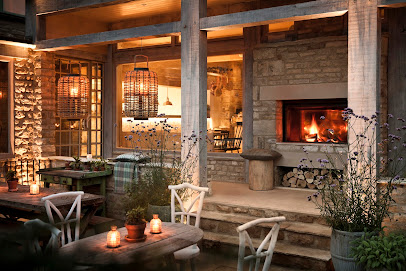
The Cotswold Arms
Experience the charm of The Cotswold Arms, a cozy pub in Burford offering delicious food and local ales amidst stunning Cotswolds scenery.
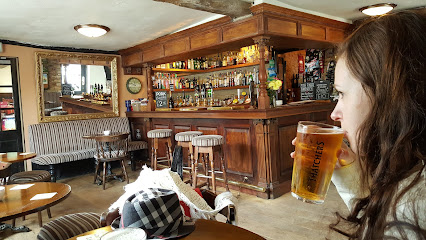
Eight Bells Inn
Experience the warmth and tradition of Eight Bells Inn in Chipping Campden, where comfort meets culinary delight in the heart of the Cotswolds.
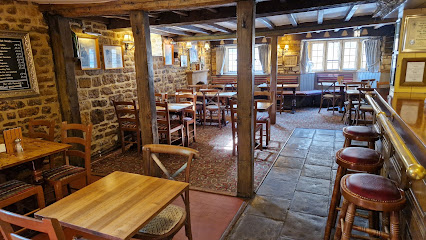
The Lion Inn
Experience the heart of British hospitality at The Lion Inn in Winchcombe, where traditional charm meets delightful cuisine in the Cotswolds.

The Chequers, Cotswolds
Discover The Chequers, a picturesque gastropub in the Cotswolds, perfect for indulging in British cuisine amidst stunning countryside views.
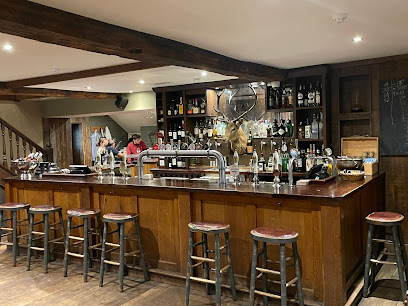
The Kingham Plough
Experience the warmth of British hospitality at The Kingham Plough, a cozy bar and restaurant in the heart of the Cotswolds.

THE STUMP
Experience the warmth of British hospitality at The Stump in Cirencester, where cozy lodging meets delightful dining in the heart of the Cotswolds.
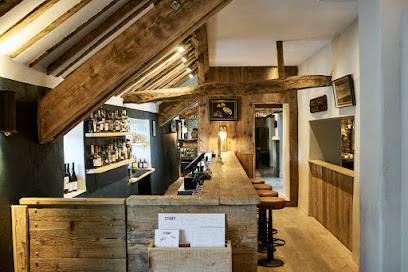
Snowshill Arms
Discover the culinary delights and rustic charm of Snowshill Arms, a gastropub in the heart of the Cotswolds offering seasonal dishes and local ales.
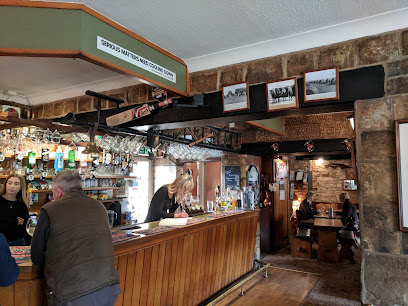
The Bell at Sapperton
Discover the heart of English village life at The Bell at Sapperton, a charming pub with delightful cuisine and an extensive wine selection.

Local Phrases about The Cotswolds
-
- HelloOw do
[oh doh] - GoodbyeTara
[tah-rah] - YesAye
[eye] - NoNah
[nah] - Please/You're welcomeIf you please
[if yew pleez] - Thank youCheers
[cheers] - Excuse me/SorryBeggin' your pardon
[beggin yur par-dun] - How are you?How be you?
[how bee yew] - Fine. And you?All right. And you?
[awl rite. and yew] - Do you speak English?D'ya speak English?
[duh yuh speak ing-glish] - I don't understandI ain't got a clue
[I aint got uh clue]
- HelloOw do
-
- I'd like to see the menu, pleaseI'll av a gander at the menu, if you please
[I'll av uh gan-dur at the menu, if yew pleez] - I don't eat meatI don't touch flesh
[I don't tuch flesh] - Cheers!Cheers!
[cheers] - I would like to pay, pleaseI'll settle up, if you please
[I'll set-ul up, if yew pleez]
- I'd like to see the menu, pleaseI'll av a gander at the menu, if you please
-
- Help!Eh-up!
[ay-up] - Go away!Clear off!
[clear off] - Call the Police!Ring the bobbies!
[ring the bob-ees] - Call a doctor!Fetch a doctor!
[fetch a doc-tur] - I'm lostI'm all at sea
[I'm awl at see] - I'm illI'm poorly
[I'm poor-lee]
- Help!Eh-up!
-
- I'd like to buy...I'll take...
[I'll take...] - I'm just lookingI'm just browsing
[I'm just brows-ing] - How much is it?How much be that?
[how much bee that] - That's too expensiveThat's a bit steep
[That's uh bit steep] - Can you lower the price?Can you do it cheaper?
[Can yew do it cheeper]
- I'd like to buy...I'll take...
-
- What time is it?What o'clock be it?
[what uh-clock bee it] - It's one o'clockIt's one of the clock
[It's one of the clock] - Half past (10)Half ten
[Half ten] - MorningMornin'
[morn-in] - AfternoonArvo
[ar-vo] - EveningEvenin'
[even-in] - YesterdayYest'day
[yest-day] - TodayToday
[Today] - TomorrowTomorrer
[tom-or-er] - 1One
[wun] - 2Two
[too] - 3Three
[three] - 4Four
[four] - 5Five
[five] - 6Six
[six] - 7Seven
[seven] - 8Eight
[eight] - 9Nine
[nine] - 10Ten
[ten]
- What time is it?What o'clock be it?
-
- Where's a/the...?Where be the...?
[where bee the] - What's the address?What be the address?
[what bee the ad-dress] - Can you show me (on the map)?Can you point me in the right direction?
[Can yew point me in the rite di-reck-shun] - When's the next (bus)?When be the next (bus)?
[When bee the next (bus)] - A ticket (to ....)A ticket (to ....)
[A ticket (to ....)]
- Where's a/the...?Where be the...?
History of The Cotswolds
-
The Cotswolds, designated as an Area of Outstanding Natural Beauty (AONB), is known for its rolling hills and picturesque villages. Its history dates back to the Neolithic and Bronze Ages, evidenced by ancient stone circles such as the Rollright Stones. During the Roman occupation of Britain, the area saw the construction of Roman villas and roads, with notable examples like the Chedworth Roman Villa, showcasing intricate mosaics and bathhouses.
-
The Cotswolds flourished in the medieval period primarily due to the wool trade. The region's lush pastures were ideal for sheep farming, and Cotswold sheep, known as 'Cotswold Lions' for their golden fleece, became highly sought after. This wealth led to the construction of grand 'wool churches,' such as St. John the Baptist in Cirencester and St. James in Chipping Campden, which remain architectural marvels to this day.
-
The English Civil War (1642-1651) left its mark on The Cotswolds. The region saw several key battles and skirmishes, including the Battle of Stow-on-the-Wold in 1646, the last major engagement of the war. The war led to the fortification of towns and the construction of defensive structures, some of which, like Sudeley Castle, still stand today, offering a glimpse into this turbulent period.
-
The Agricultural Revolution of the 18th century brought significant changes to The Cotswolds. Enclosure acts transformed the landscape, consolidating small landholdings into larger farms. This period saw the development of new farming techniques and the introduction of new crops. Historic market towns like Moreton-in-Marsh and Tetbury became hubs for the exchange of agricultural goods.
-
The Victorian era was a time of both growth and decline for The Cotswolds. While some towns benefited from the arrival of the railways and new industries, others saw a decline in traditional crafts and agriculture. The wool industry, once the lifeblood of the region, struggled to compete with industrialized production. However, this period also saw the construction of notable buildings and the rise of tourism, as people sought the tranquility and beauty of the countryside.
-
In the 20th and 21st centuries, efforts to preserve the unique character and heritage of The Cotswolds have intensified. The designation of the area as an AONB in 1966 helped protect its landscapes from overdevelopment. Today, The Cotswolds is a major tourist destination, attracting visitors with its historic villages, stately homes like Blenheim Palace, and natural beauty. The Cotswold Way, a long-distance walking trail, offers a scenic route through the heart of this historic region.
The Cotswolds Essentials
-
The Cotswolds is located in south-central England, easily accessible by various modes of transport. The nearest major airports are Bristol Airport (BRS) and Birmingham Airport (BHX), both of which are approximately an hour's drive away. London Heathrow Airport (LHR) is also a viable option, about 1.5 to 2 hours by car. For those traveling by train, there are direct services from London Paddington to Moreton-in-Marsh, Kemble, and other Cotswold towns. National Express and local bus services also connect the Cotswolds to surrounding cities.
-
Within the Cotswolds, a car is the most convenient way to explore the region, allowing flexibility to visit the many charming villages and countryside attractions. Car rental services are available at major airports and train stations. Alternatively, local bus services and taxis are available, although less frequent in rural areas. Cycling is also a popular way to explore, with many dedicated bike routes and scenic trails.
-
The official currency in the United Kingdom is the British Pound Sterling (GBP). Credit and debit cards are widely accepted throughout the Cotswolds, including in hotels, restaurants, and shops. However, it is advisable to carry some cash, especially when visiting smaller villages and local markets. ATMs are available in most towns, but it is wise to withdraw sufficient cash before heading to more remote areas.
-
The Cotswolds is generally a very safe area with low crime rates. However, it is always advisable to take standard precautions, such as keeping valuables secure and being aware of your surroundings. There are no specific high-crime areas targeting tourists, but it is recommended to avoid walking alone late at night in unfamiliar places.
-
In case of emergency, dial 999 or 112 for immediate assistance from police, fire, or medical services. Most towns have local police stations and medical facilities. It is advisable to have travel insurance that covers medical emergencies. Pharmacies are available in larger towns, where you can purchase over-the-counter medications for minor health issues.
-
Fashion: Do dress comfortably and in layers, as the weather can be unpredictable. Avoid overly casual attire when dining in upscale restaurants. Religion: Do respect local customs, especially when visiting churches. Public Transport: Do be courteous to bus drivers and fellow passengers. Don’t occupy priority seats meant for elderly or disabled passengers. Greetings: Do greet people with a simple 'Hello' or 'Good morning.' A handshake is appropriate in more formal settings. Eating & Drinking: Do try local specialties and be open to traditional British cuisine. Don’t forget to book ahead for popular pubs and restaurants, especially on weekends.
-
To experience the Cotswolds like a local, visit the weekly farmers' markets in towns like Cirencester and Stroud, where you can buy fresh produce and artisanal goods. Engage with locals in village pubs, which are often the heart of the community. Don’t miss exploring the lesser-known villages and walking the many public footpaths that crisscross the countryside. For a unique experience, attend local events and festivals, such as the Cheltenham Literature Festival or the Tetbury Woolsack Races.
Trending Landmarks in The Cotswolds
-
Cotswolds AONB
-
Blenheim Palace
-
Cotswold Wildlife Park & Gardens
-
Broadway Tower
-
National Trust - Hidcote
-
The Model Village
-
Sudeley Castle
-
Cotswold Farm Park
-
National Trust - Snowshill Manor and Garden
-
National Trust - Chedworth Roman Villa
-
The Rollright Stones
-
National Trust - Bibury
-
National Trust - Chastleton House
-
Arlington Row
-
Abbey Grounds Park
Nearby Cities to The Cotswolds
-
Things To Do in Stratford-upon-Avon
-
Things To Do in Bath
-
Things To Do in Bristol
-
Things To Do in Birmingham
-
Things To Do in Windsor
-
Things To Do in Cardiff
-
Things To Do in London
-
Things To Do in Nottingham
-
Things To Do in Cambridge
-
Things To Do in Chester
-
Things To Do in Sheffield
-
Things To Do in Manchester
-
Things To Do in Liverpool
-
Things To Do in Leeds
-
Things To Do in York

